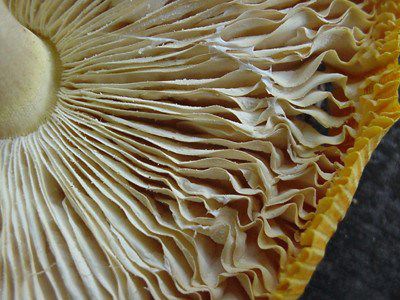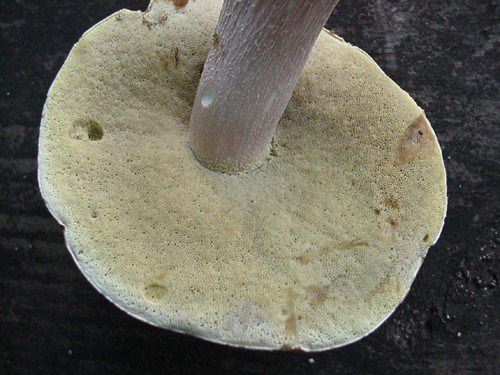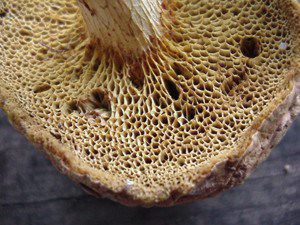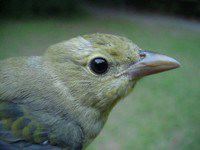|
|
|||
|
THIS WEEK at HILTON POND Installment #---Visitor # (Back to Preceding Week; on to Next Week) |
|
Drought conditions continue in much of the Carolina Piedmont, but the four inches of rain that fell at Hilton Pond Center in early August 2000 jump-started a mushroom boom that has continued despite the absence of additional precipitation (see "This Week at Hilton Pond" for 1-7 August.) Many mushrooms that sprang up overnight two weeks ago have already disappeared, but they've been replaced on the landscape either by different species or by more of their own kind.  All photos © Hilton Pond Center Fungi are not always easy to identify--not a happy situation when a mushroom fancier mistakes a poisonous fungus for an edible one. It takes years in the field with an experienced expert to tell one mushroom from another; trial-and-error just isn't a smart way to learn about fungal toxicity. One mushroom characteristic that can help differentiate various species is the way the spores are borne on the fungus. If you flip over a mushroom's cap--the umbrella-like structure--and examine its underside, one of two different textures will be revealed.
In all types of mushrooms, spores may be either light and dry, or somewhat sticky. As dry spores ripen, gravity pulls them from the sporangia and they fall directly to the forest floor or are carried away from the parent mushroom by wind or water. Sticky spores tend to get moved to another locale when they adhere to insects. Since mature mushrooms often smell rotten, they can attract beetles and flies that lay their eggs in the cap. The resulting grubs or maggots may transport the spores, as may the more mobile adults they eventually become.
|

 Some mushrooms are generically called "gill fungi." Beneath their caps are hundreds of flat, vertical partitions radiating like spokes of a wheel from the center of the cap (top and right). On either side of each gill lie microscopic sporangia that produce the even-tinier spores. In other mushrooms, the cap's underside resembles a fine sponge (below). These are "pore fungi," in which spores emanate from sporangia within tiny holes under the cap. The size of these holes varies from species to species, as may the color and overall texture. In some mushrooms, the holes are so large they look like a cross between pores and gills (bottom).
Some mushrooms are generically called "gill fungi." Beneath their caps are hundreds of flat, vertical partitions radiating like spokes of a wheel from the center of the cap (top and right). On either side of each gill lie microscopic sporangia that produce the even-tinier spores. In other mushrooms, the cap's underside resembles a fine sponge (below). These are "pore fungi," in which spores emanate from sporangia within tiny holes under the cap. The size of these holes varies from species to species, as may the color and overall texture. In some mushrooms, the holes are so large they look like a cross between pores and gills (bottom).
 To see what fungal spores actually look like, one evening place the cap of a mature mushroom bottom-down on a piece of white paper. Next morning, carefully lift the cap. The spores will have shed to reveal a perfect outline of the gills or pores that produced them. Spores may be black, brown, white, pink, or other shades, and these colors are one of the most useful tools in identifying mushrooms.
To see what fungal spores actually look like, one evening place the cap of a mature mushroom bottom-down on a piece of white paper. Next morning, carefully lift the cap. The spores will have shed to reveal a perfect outline of the gills or pores that produced them. Spores may be black, brown, white, pink, or other shades, and these colors are one of the most useful tools in identifying mushrooms.


